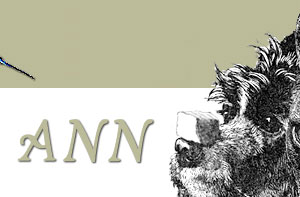 Rabbits make excellent pets. They are easy to care for, inexpensive to feed, and extremely affectionate. They can also be litter trained and allowed to have free access to the house. However, they do have one habit that is extremely destructive and very frustrating - they like to chew. Rabbits make excellent pets. They are easy to care for, inexpensive to feed, and extremely affectionate. They can also be litter trained and allowed to have free access to the house. However, they do have one habit that is extremely destructive and very frustrating - they like to chew.
Chewing behaviour in rabbits is one that is not easily curbed. It is an instinctive behaviour as they need to chew in order to wear down their incisors which grow continuously throughout their lives. It is therefore important to understand the chewing behaviour of your pet rabbit and take the necessary precautions to protect your bunny and your belongings.
Several things may contribute to your rabbit's chewing. These include psychological and environmental factors.
Psychological
Gender - the burrowing instinct is often stronger in female rabbits than in males, though this is not the only reason for chewing. Hormonal and age factors apply to male rabbits as well as for female and both should b spayed or neutered when they reach sexual maturity (3« - 6 months).
Hormone/Age Factor - A mature rabbit that is not spayed or neutered is more likely to chew on your house and belongings. A rabbit that has not reached maturity is also more likely to chew. If your rabbit is mature and has been spayed or neutered then hormones is not the cause of the chewing.
Personality - Rabbits that chew are often intelligent, outgoing, affectionate individuals who like lots of attention and be in charge. The personality of your rabbit along with her environment might make her chew to get attention or to simply alleviate boredom.
Environmental
Diversions - If a bunny is bored they will often chew just to pass the time. Supplying them with toys such as toilet paper rolls, cans with rocks inside them, twigs, blocks etc... will give a rabbit something to do and something that they are allowed to chew on.
Even though chewing is an instinctive behaviour most bunnies can and will learn what they aren't and what they are allowed to chew on, it just requires alot of patience from the owner.
The Steps in Training a Rabbit
- Communicate what you don't want the rabbit to do.
- Offer alternatives as similar as possible to whatever the rabbit is chewing
Example: Thumper is chewing on furniture
- Slip hand between Thumper's mouth and the furniture, and say "NO"! (firmly, not loudly).
- Give Thumper something that is OK for him to chew on and will enjoy more : - apple, willow, aspen branches - pine firewood - basket with hay in it (let Thumper chew the basket as well as the hay) - toilet paper rolls - etc...
- Use a deterrent such as spraying the rabbit with a water bottle or putting a nasty tasting product such as bitter apple spray or Tabasco on things the rabbit likes to chew.
- If nothing else seems to work say "NO" and put the bad bunny into his cage for a short time (ignore the angry shaking and rattling of cage bars). Loss of freedom is the ultimate punishment for a roaming rabbit.
Training a rabbit is a time consuming and frustrating activity but well worth it in the end. There is one object that rabbits love to chew on that should not be included in the do not chew training. These are electrical cords. Any cords that are in vicinity of the rabbit should be covered. Cord covers can usually be obtained from audio/visual shops such as Radio Shack, or anything that can hold cords that the bunny cannot chew through, such as a hose split open, will do just as well. Electrical cords pose a serious health hazard to bunnies and so should not be left to chance.
Another serious health hazard may occur if the rabbit is chewing off and ingesting its own fur or the fur of another rabbit. The ingested fur may get stuck in the stomach and cause a hairball. Studies have shown that the addition of loose grass hay to the diet stops this particular behaviour.
Important things to remember about owning rabbits are that if something is irreplaceable don't leave it where the rabbit can reach it and that the price of rabbits is eternal vigilance.
Further Information :
Rabbits : All About Them. Alvin and Virginia Silverstein. 1973. Lothrop, Lee and Shepard Company. New York, New York.
House Rabbit Handbook. The House Rabbit Society. 3rd Ed. 1995. Drollery Press. Alameda, Ca.
Rabbit Care FAQ. http://www.mit.edu:8001/people/klund/bunny/petbunny.html
House Rabbit Society. http://www.psg.lcs.mit.edu/~carl/paige/HRS-home.html
Beynen, A.C., Mulder, A., Nieuwenkamp, A.E., Van der Palen, J.G.P., and Van Rooijen, G.H. Loose Grass Hay as a Supplement to a Pelleted Diet Reduces Fur Chewing in Rabbits. Journal of Animal Physiology and Animal Nutrition. 1992. 68:226-234
Reprinted by permission: Applied Ethology home page | 

